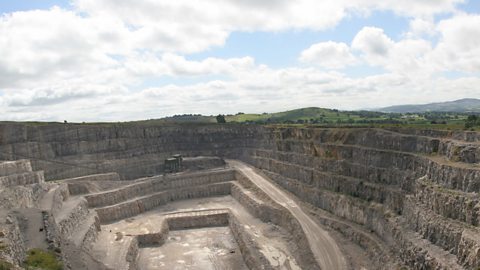Uses of limestone
limestoneA type of sedimentary rock. ÔÇô which is a sedimentary rockA type of rock formed by the deposition of material at the Earth's surface. ÔÇô is a valuable resource from the EarthÔÇÖs crust. It has many uses.
- It can be used as a building material.
- It is used in the production of cement by heating powdered limestone with clay. Cement is an ingredient in mortar and concrete. Mortar ÔÇô used to join bricks together ÔÇô is made by mixing cement with sand and water. Concrete is made by mixing cement with sand, water and aggregate (crushed rock).
- It is a major ingredient in toothpaste.
- It can be used as a food additive to provide calcium ionElectrically charged particle, formed when an atom or molecule gains or loses an electron/electrons. for strong teeth and bones.
- It can be processed as a useful raw material in the chemical industry.
- It can be used to neutralise acidic soil to allow plants to grow more effectively. This is mainly used for large-scale agriculture. Quicklime and slaked lime can also be used for this purpose, as well as neutralising acidity in water sources such as lakes.
Limestone is also used to remove impurities from the blast furnace when making iron. The impurities are mostly silicon dioxide (also known as sand). The calcium carbonate in the limestone reacts with the silicon dioxide to form calcium silicate (also known as slag).
CaCO3(s) Ôćĺ CaO(s) + CO2(g)
CaO(s) + SiO2(l) Ôćĺ CaSiO3(s)
moltenA term used to describe a liquid substance (eg rock, glass or metal) formed by heating a solid. calcium silicate is less dense than the molten iron so it floats on top of the iron and can easily be removed.
Limestone can be crushed and used to build roads. The waste slag from the blast furnace can also be used for this purpose.
Most limestone is obtained by quarrying, where the rock is blasted out of the ground in huge pits.
